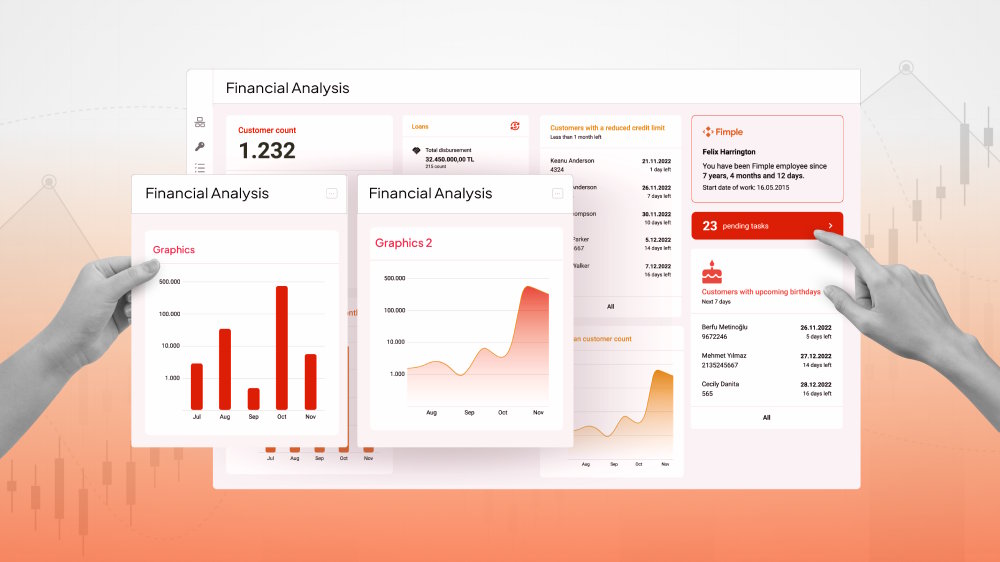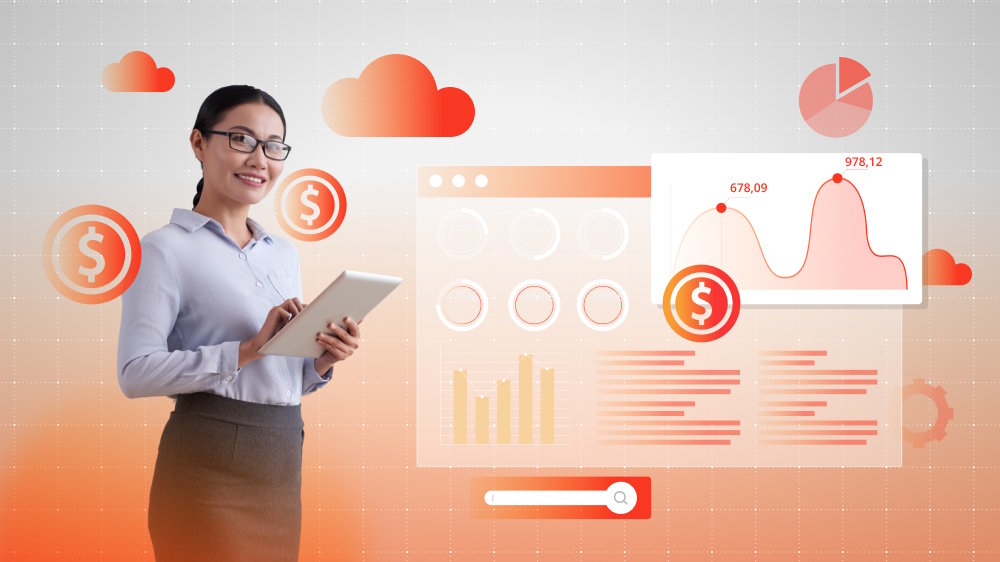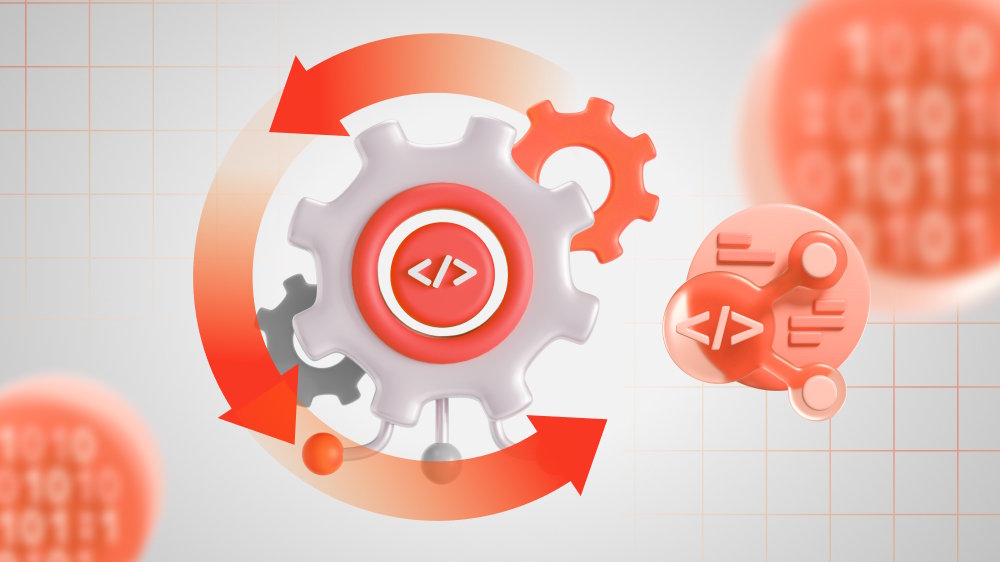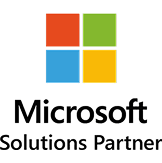
A Guided Tour Around Different Types of Software Development
Welcome to the world of software engineering. Let’s discover the most common types of software development and choose the right path for your upcoming project.
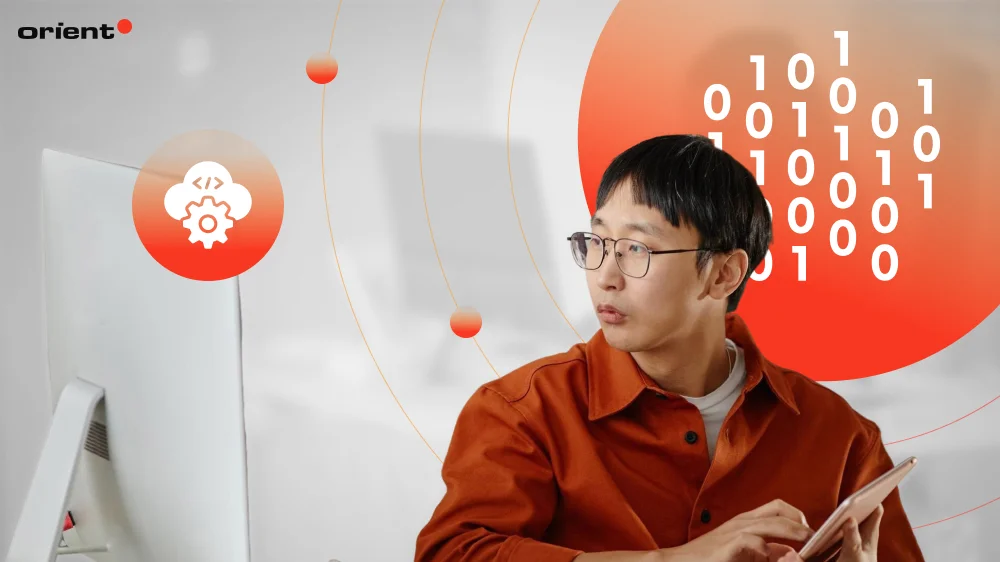
Content Map
More chaptersSoftware engineering is a vast and comprehensive field that encompasses an extensive range of specialized areas and covers different engineering functions, with each catering to specific needs.
Are you brainstorming for your upcoming big idea of developing software, planning to assemble a team of software engineering roles, or outsourcing the entire development process to a third-party company? Whichever path you take, this “little map” will prove useful to you.
In our listicle, we categorize all the major types of software engineering. Through our list, you will gain a basic understanding of each, so you can have a stronger foundation for choosing the right approach. Without further ado, let us give you a glimpse.
By Platform Domain
This category decides where software programs run and how they are delivered. It spans multiple specialized domains, including web browsers (E.g., Google Chrome or Safari), mobile devices (iOS, Android, or cross-platform), desktops, cloud/server, embedded/IoT systems, and extended reality (XR) platforms, like augmented reality (AR) and virtual reality (VR) headsets.
Website Development
Let’s start with the most familiar one: Content-centric websites. This engineering type refers to the creation of a website or related web-based content that users can access through a browser at a URL. The primary focus of web development is on content delivery and presentation - to deliver information, storytelling, and brand value/marketing experience through structured pages.
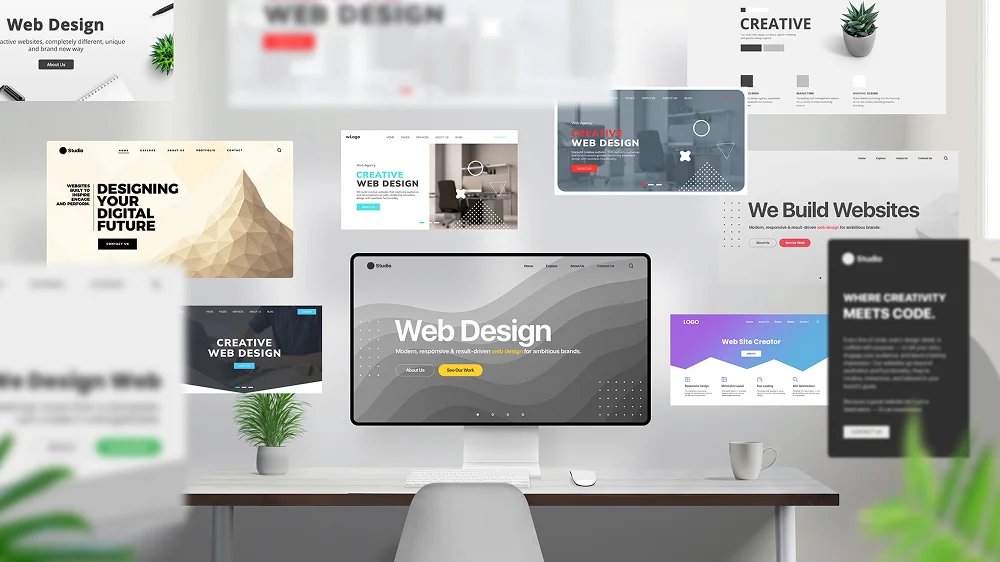
For example, corporate sites, landing pages, blogs, documentation portals, online portfolios, and campaign microsites. The development work revolves around content strategy and information architecture, visual design, copywriting, search engine optimization (SEO), accessibility, and performance.
Interactivity exists, but it is in service of content discovery rather than heavy, stateful client logic. Users are able to trigger small on-page changes using interactive elements, such as buttons, search, menus, forms, sliders, etc.
Website development projects fall into three delivery models:
- Static sites/Static Site Generation (SSG): Web pages are prebuilt into HTML/CSS (with small amounts of JavaScript) and served via a Content Delivery Network (CDN). They are fast, secure, and cost-effective to build, and they are ideal for blogs, docs, marketing pages, portfolios, or a simple online presence with fixed content or predictable updates. Modern “static” isn’t limiting you can still fetch dynamic data on the client or at the edge when needed.
- Dynamic (Server-Rendered): Web pages are generated by the server at request time, typically backed by a CMS and database. This suits frequently real-time data, content that can change depending on user input and preferences, or routes that require server logic.
- Hybrid (Incremental Static Regeneration/On-demand Revalidation): It combines both models - static pages prebuilt for speed and selectively re-generated pages for real-time content updates.
Common programming languages used in website design and development include HTML (Hypertext Markup Language), CSS (Cascading Style Sheets), and JavaScript, not to mention popular frameworks like React, Vue, Angular, Node.js, Django, Rails, or platforms such as WordPress and Drupal.
Web App Development
This is a specialized branch of web engineering that goes beyond informational website pages. Web app development focuses on the construction of interactive, dynamic web-based applications that users can interact with continuously, like native desktop or mobile apps.
These browser-based solutions run on remote servers and are accessible from various desktop operating systems and devices over the internet. Unlike content-centric websites, web apps are built to handle multi-step workflows, manage user data, and often support real-time interactions between the client and server. Common examples include online banking portals, SaaS platforms (like Slack, Asana, or Google Docs), social media networks, ecommerce/marketplaces (Amazon, eBay), booking platforms, collaboration tools, and countless services we are relying on daily.

More often than not, developing a single web app is more cost-effective than creating separate native apps for multiple platforms and is less time-consuming than traditional desktop application development. Furthermore, web apps are highly scalable, capable of accommodating an increasing user base without requiring significant changes to the infrastructure, thanks to modern cloud and DevOps practices.
From a workflow perspective, web application projects produce more than just a codebase. They include system designs and architecture documentation that define how the application is structured, wireframes and prototypes that validate the user experience, and robust databases and APIs that form the system’s foundation. Automated test suites and quality assurance reports ensure the app can perform reliably under real-world conditions. Alongside these, deployment pipelines, monitoring systems, and technical documentation make sure the application remains maintainable, secure, and adaptable over time.
Recently, Progressive Web Apps (PWAs) have emerged as an exciting development within this field. PWAs combine the accessibility of web applications with the features of native apps to bring forth offline functionality, push notifications, and even installability on mobile devices.
Mobile App Development
This type refers to the concept of designing, building, and maintaining software that run on smartphones and tablets, and often extends to other mobile devices like wearables (Apple watches and other smartwatches) or foldables. Many mobile apps are created to work alongside web-based counterparts. For example, Slack, Gmail, or banking applications.

With an estimated two billion smartphone users worldwide, there is no telling how many applications are created and launched every day to keep pace with the user demands across fields, especially in entertainment, social media, and business. What a massive number! In such a mobile-first era, where everyone owns a smartphone or even two and lives online more than ever before, creating mobile-based solutions is indeed a huge industry for any software development engineer. Businesses and enterprises view mobile applications as a must to establish their online presence to reach and convert customers. Meanwhile, creators monetize their apps through purchases, advertisements, subscriptions, and more.
Modern mobile applications fall into one of these sub-categories:
Native Application Development
As the term suggests, native development refers to building applications for one specific platform - iOS and Android. These are the two predominant operating systems (OSs) in mobile app development, and each calls for its own specifics and unique functionalities.

Mobile developers often need to work with different tools, languages, APIs, and SDKs (Software Development Kits) to create applications tailored to a specific mobile OS.
iOS App Development Tech Stack:
- Programming Languages: Swift (modern, Apple’s primary language), Objective-C (legacy support).
- IDE & Tools: Xcode (official Apple IDE), Interface Builder, Instruments (for performance/debugging).
- Frameworks: UIKit, SwiftUI (modern UI framework), Core Data (persistence), ARKit, Core ML.
- Software Testing: XCTest, XCUITest, Firebase Test Lab (cross-platform).
- Deployment: Apple App Store (via App Store Connect).
Android App Development Tech Stack
- Programming Languages: Kotlin (official and most recommended), Java (legacy, still widely used).
- IDE & Tools: Android Studio (official IDE), Gradle (build system).
- Frameworks: Jetpack (libraries for UI, lifecycle, navigation, data), Android SDK, Room (database), ML Kit.
- Software Testing: JUnit, Espresso, Robolectric, Firebase Test Lab.
- Deployment: Google Play Store (via Google Play Console).
Platform-specific development ensures apps have direct access to device hardware and system features, resulting in the highest performance, the smoothest user experience, and the best integration with each platform’s unique design standards. However, it comes with a trade-off: Building native mobile apps for both iOS and Android obviously requires separate codebases and development teams. This certainly adds up to your development time and costs.
Cross-Platform Development
This approach seeks to solve the efficiency problem of writing software for each individual OS (iOS or Android). Instead, cross-platform development enables a single codebase to run on multiple platforms.
Software developers design and program apps utilizing cross-platform frameworks. These pre-built tools and libraries enable coding once and deploying it to both iOS and Android.
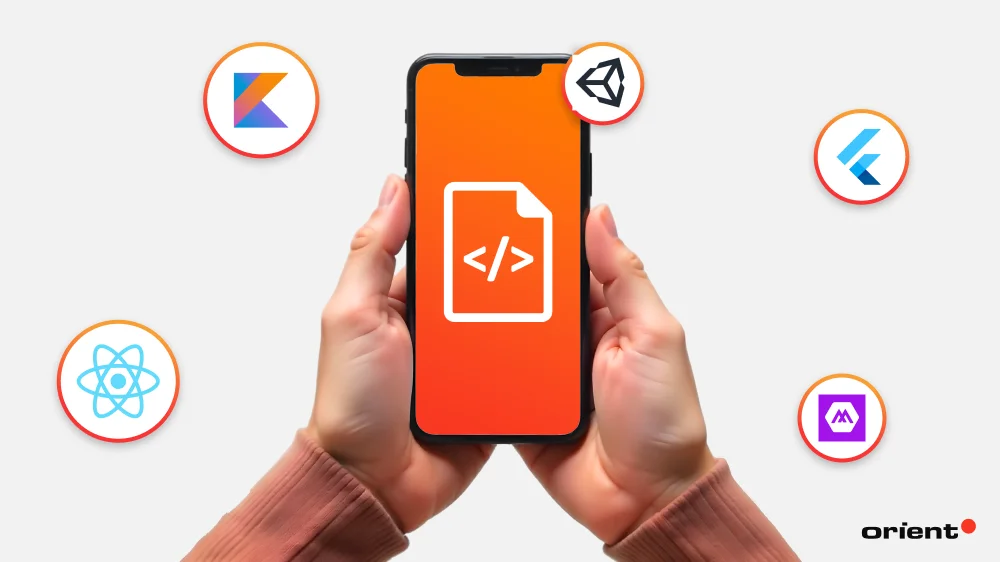
Cross-Platform Development Stack:
- React Native (JavaScript, React-based).
- Flutter (Dart, by Google).
- Xamarin/ .NET MAUI (C#, Microsoft ecosystem).
- Ionic (HTML, CSS, JavaScript with Capacitor/Cordova).
Advantages, namely faster development, lower cost, and easier maintenance, are well within reach. More than that, many of today’s development frameworks have matured to a point where multi-platform apps feel “nearly indistinguishable” from native ones regarding performance and user experience.
Nonetheless, cross-platform development reveals limitations when it comes to advanced platform features, graphics-heavy or hardware-intensive use cases. It is fair enough. As the app builder, you need to decide when to go for which based on your specific use cases and project requirements, though some of modern frameworks have significantly closed that gap. At the end of the day, the balance between efficiency and functionality still makes cross-platform app development a highly appealing option for many companies.
Hybrid Application Development
This approach is sometimes confused with cross-platform development, but they are not the same. In the hybrid approach, developers combine elements of both web development technologies (HTML, CSS, and JavaScript) and native mobile capabilities.
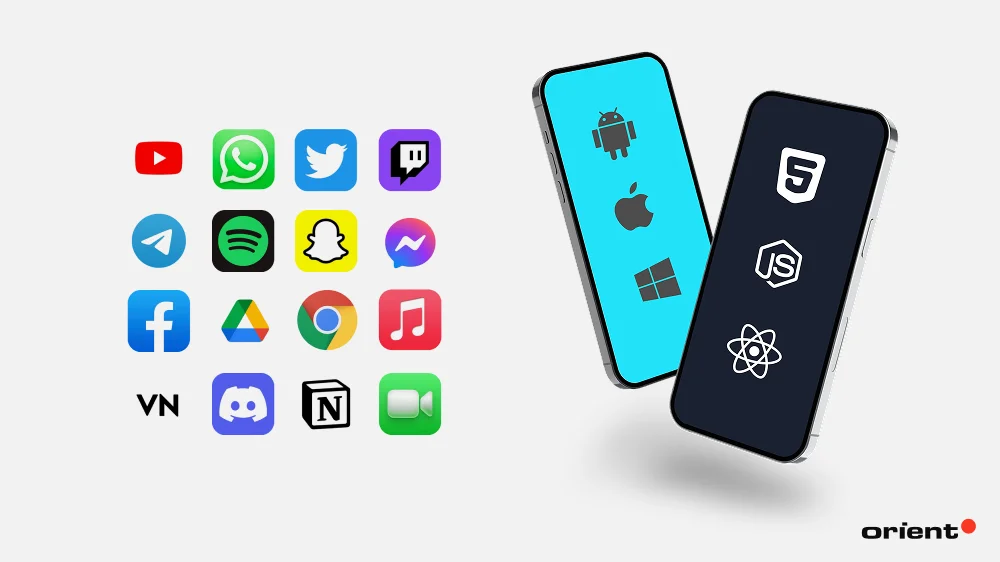
Hybrid mobile apps are built with a standard web stack and wrapped inside a native container. This allows them to be installed from app stores and access device capabilities (such as the camera, GPS, or push notifications) through plugins. Popular frameworks for hybrid development include Ionic, Apache Cordova, or Capacitor.
Hybrid apps are faster and more budget-friendly to build than fully native ones, which is also their appeal to many developers. In addition to fast, lower-cost development, it is simpler to make updates to hybrid apps. Still, hybrid applications may not achieve the same performance and responsiveness compared to purely native apps. Hence, this sub-type of development is often suited for basic applications, content-driven apps, or businesses that need a mobile presence quickly without the heavy investment of full native development.
Desktop Application Development
This type is about the creation of computer systems that are installed directly onto a user’s PC and run on its operating system - it can be Windows, macOS, or Linux. Unlike browser-based or mobile-first solutions, desktop apps function successfully without internet connection or reliance on browsers or app stores. Desktop apps are distributed as executables and installed locally, so they have the advantage of deep system integration and the ability to fully leverage the host machine’s power.
Desktop applications are usually built to serve professional or enterprise use cases. They are found ubiquitously as office productivity suites, graphic design tools, financial trading platforms, integrated development environments (IDEs), and engineering software.

Indeed, desktop applications are not constrained by browser performance or mobile hardware limitations; they can handle complex processing, large-scale data manipulation, and graphics-heavy workloads with relative ease. However, this type of app is platform-dependent. Desktop developers need separate builds and adjustments to enable their software to run natively across different system software like Windows, macOS, or Linux. To simplify distribution, they can make use of frameworks that support cross-platform desktop development, such as Electron, Qt, or .NET MAUI.
Another defining aspect of desktop app development is maintenance and updates. While web or mobile applications can be updated instantly on the server side, desktop software must be packaged and delivered to users as installable programs. This demands thoughtful release engineering, automated update mechanisms, and compatibility across different OS versions. For more complex projects like enterprise-scale software applications, distribution may be handled through centralized deployment tools, while consumer-facing apps often rely on installers or app marketplaces such as the Microsoft Store or Mac App Store.
Embedded System Development
Embedded software system combines specialized hardware with software purpose-built to conduct a specific function or set of functionalities within a larger product or system. Unlike general-purpose software development, this discipline involves working with real-time responsiveness, limited memory, power efficiency, and long-term reliability.
Embedded systems underpin countless everyday and industrial technologies. They range from firmware in household applications, control systems in automobiles, and medical devices to complex industrial machinery like robots, IoT sensors, and even chips that power smart wearables.
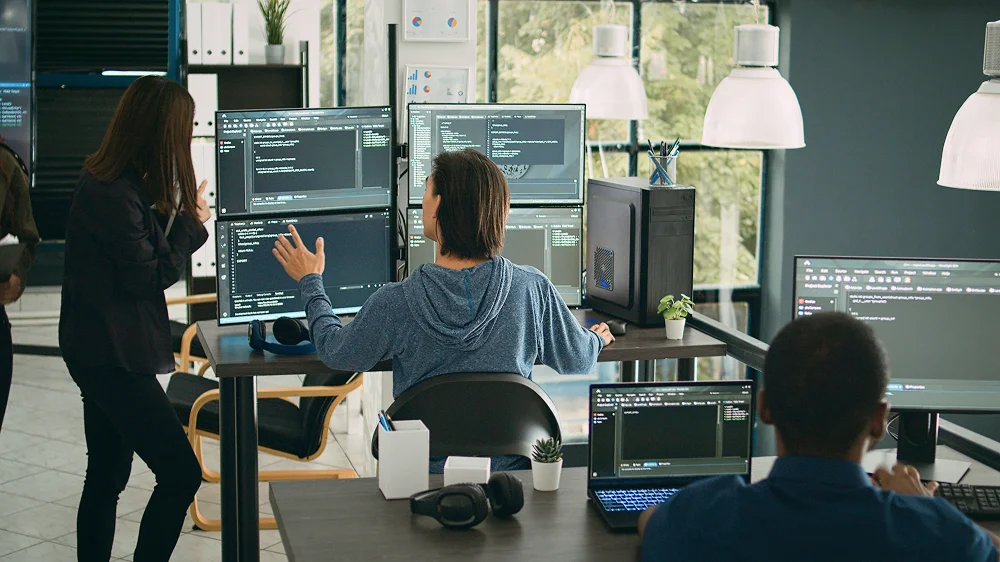
Developing embedded software requires an extensive knowledge base of both hardware and software components. Engineers often work with microcontrollers, processors, and sensors that have minimal resources, which makes optimization essential. With the rise of Internet of Things (IoT) technology, embedded systems have become even more critical as they facilitate communication between devices and sensors. This also promises more possibilities for innovation in the near future.
Modern development is also evolving. While low-level languages such as C and C++ remain dominant for performance and hardware access, modern embedded development increasingly incorporates higher-level languages like Python (e.g., for IoT prototyping) alongside specialized real-time operating systems (RTOS) that manage task scheduling and device reliability.
Operating System Development
An operating system, or OS, acts as a translator between the hardware and software to enable them to communicate and function well together. For example, Windows, macOS, iOS, or Android. It manages memory, schedules processes, controls input/output, and provides the foundation for all other software to run. Without it, a computer or device would not function in any practical sense. Most operating systems will either be pre-installed by the manufacturers before being sold or be installed by users, like an embedded system.

Developing an OS is a highly complex process that demands advanced expertise in low-level programming, processor architectures, algorithms, and hardware-software interaction. Programming languages like C, C++, and even assembly are essential for building kernels and device drivers. Design choices also matter: Monolithic kernels emphasize performance, while microkernels focus on modularity and fault isolation.
The field is dominated by tech giants such as Microsoft, Apple, and Google, but open-source projects like Linux remain equally vital, powering servers, cloud systems, IoT devices, and even supercomputers. Today’s OS development faces new challenges in security, virtualization, cloud-native workloads, and energy efficiency. This pushes engineers to innovate while maintaining stability and performance.
By Specialization
The second category classifies different types of software development based on the purpose, domain, and complexity.
Security Software Development
This type of software development is mission-critical. By definition, security software development is about creating software programs and tools designed to protect an organization’s data from theft, unauthorized access, or other malicious activities.

This type of software development is often highly configurable, which means it can work with different types of computer systems and surrounding infrastructure without issue. You can easily relate to multiple examples of security software around you, such as antivirus programs, firewalls, intrusion detection systems, etc.
Cloud Software Development
In this type of development, engineers develop and maintain software applications and services that run in distributed, virtualized environments rather than on a single physical machine. By leveraging the computing power, storage capacity, and scalability of platforms such as Amazon Web Services (AWS), Microsoft Azure, and Google Cloud Platform (GCP), developers create applications that are resilient, scalable, and accessible as services over the internet.
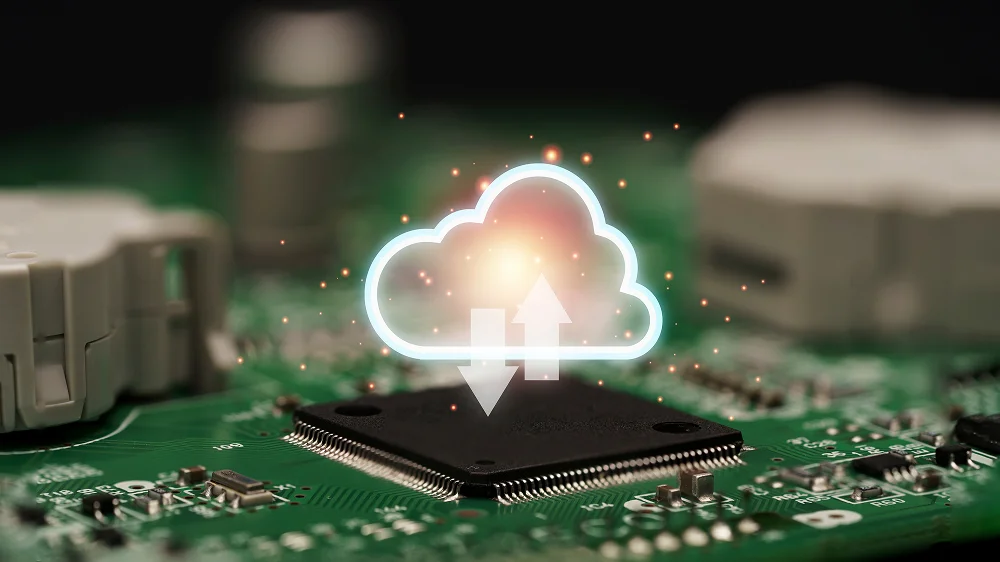
Cloud software development is often categorized into three primary service models:
- Software-as-a-Service (SaaS): Complete applications delivered over the internet, such as Google Workspace, Slack, or Salesforce, where users simply log in and use the service.
- Platform-as-a-Service (PaaS): Platforms like Heroku or Azure App Service that provide ready-to-use environments for building and deploying applications, without managing the underlying hardware or operating systems.
- Infrastructure-as-a-Service (IaaS): Virtualized infrastructure resources such as AWS EC2 or Google Compute Engine, giving businesses the flexibility to configure computing environments as needed.
Data Science, AI & Machine Learning Development

This specialization revolves around creating software that extracts insights from data and builds intelligent systems. Engineers work with tools like Python, R, TensorFlow, PyTorch, and Spark to design algorithms capable of data analysis, predictive modeling, computer vision, and natural language processing. AI and ML development bridges statistics, mathematics, and software engineering to enable personalized recommendations, autonomous systems, fraud detection, and much more. With industries increasingly data-driven, this field is one of the fastest-evolving in today’s software engineering.
Front-End Development
Front-end development, often referred to as user interface development. This process focuses on building the parts of an application that users see and interact with directly - called user-facing components. From navigation menus and responsive layouts to forms, buttons, and animations, every visible element of a digital product is shaped by front-end code.

Front-end developers rely on technologies such as HTML, CSS, and JavaScript to write code, together with using libraries and frameworks like React, Angular, or Vue.js. Beyond visuals, strong frontend work emphasizes accessibility, cross-browser compatibility, and performance optimization. It requires knowledge of web design principles, responsive design techniques, cross-browser compatibility, and user experience best practices. A well-designed front end can bring great differences in user engagement and satisfaction.
Back-End Development
The backend is what happens behind the scenes, be it the server-side development of software solutions. This is the part users cannot see but rely on every time they interact with the interfaces. When a user fills out a form on a website, for example, it is the back end that validates the input, stores the data, and returns a response.

Backend development encompasses server logic, database management, APIs, authentication, and integration with external services. Backend developers typically work with server-side languages such as Java, Python, or PHP, supported by frameworks like Spring, Django, or Laravel. They also manage relational databases (like PostgreSQL or MySQL) and non-relational options (like MongoDB or Redis) to ensure that data flows securely and efficiently.
A robust back end guarantees scalability, reliability, and security; it forms the foundational engine on which the user-facing experience depends. Without a well-developed back end, even the most user-friendly front end could struggle to function correctly. In server-side development, front- and back-end developers should work hand in hand to ensure the user interface integrates seamlessly with the backend processes.
Full-Stack Development
The name speaks for itself. Full-stack development refers to engineering software applications across the entire stack, both front end (user-facing) and back end (server, database, and logic).

Known as “jack of all trades,” full-stack developers are able to work on every layer of the software’s architecture, from design, database management, and server-side coding to user-facing interfaces. A full-stack developer is capable of designing user experiences, implementing server-side logic, managing databases, and connecting everything through APIs all within the same project. This versatility makes them especially valuable in startups and smaller teams, where efficiency and flexibility are critical, as well as in larger organizations for rapid prototyping.
Being full-stack requires broad skill sets that span multiple disciplines. Common full-stack ecosystems include the MERN stack (MongoDB, Express, React, Node.js) or LAMP stack (Linux, Apache, MySQL, PHP). However, many full-stack developers are generalists; they may not reach the same depth of specialized expertise in each area as specialists do. Increasingly, full-stack developers also extend their knowledge into DevOps practices (such as containerization, CI/CD, and cloud deployments) to ensure they can deliver applications end to end.
Database Development
A database is meant to be a central repository to store, organize, manage, and retrieve digital information (data). Databases power virtually all modern software solutions, spanning across finance, healthcare, e-commerce, logistics, IoT, enterprise systems, and many more.

The core of database development is on building systems in a way that secures data integrity, scalability, and security, while supporting the specific needs of applications and businesses. Depending on the use case, this may involve creating relational databases for structured data, NoSQL solutions for flexible or large-scale storage, or cloud-based platforms for highly distributed systems.
API Development
Application Programming Interface (API) development involves creating the rules and endpoints that enable software systems to communicate with each other. Instead of operating in isolation, modern applications rely on APIs to exchange data and services seamlessly. Good API development emphasizes consistency, scalability, and documentation so that other developers can easily integrate with the system.

Popular development frameworks for building APIs include Express.js (Node.js), Django REST Framework, and FastAPI. As ecosystems become more interconnected, APIs are glue binding applications, cloud services, and IoT devices together.
IoT Development
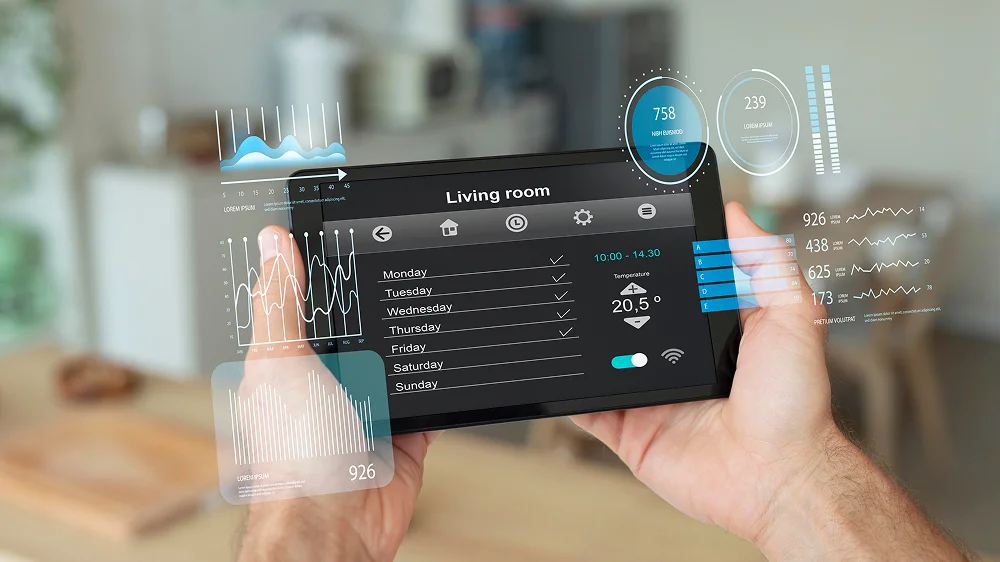
Internet of Things development focuses on creating systems that connect everyday devices and sensors to networks on which they are enabled to collect and exchange data. These IoT solutions can be as simple as sensors measuring temperature or as complex as autonomous vehicles. The goal of IoT development is to create smart, connected ecosystems that improve efficiency, convenience, and decision-making.
Blockchain Development
This development type centers on building decentralized applications (dApps), platforms, and infrastructure that leverage blockchain technology to provide transparency, security, and trust without relying on centralized authorities.

These solutions can be as straightforward as cryptocurrency wallets or as complex as global decentralized finance (DeFi) ecosystems. Blockchain applications extend far beyond cryptocurrencies, with use cases in supply chain management, digital identity, healthcare, gaming, and secure data sharing.
No-Code/Low-Code Development
No-code and low-code development facilitate rapid application development with minimal traditional coding. Using platforms like OutSystems, Mendix, or Bubble, business users and developers alike can drag and drop components to assemble workflows, dashboards, and business apps.

This approach democratizes software creation, shortens time to market, and empowers non-technical teams. However, for highly complex, mission-critical systems, low-code/no-code is often used in combination with traditional development rather than as a complete replacement.
Other Specialized Types
In addition to the categories already mentioned, there are still many other branches of software development that do not belong to one single box but remain vital to the industry. We list a few of them below:

Custom Software Development
This is a custom-made type of software development in which applications are purpose-built to address unique needs, workflows, or goals to ensure higher alignment with strategies and long-term scalability of a business. Custom or tailor-made solutions can range from specialized internal tools to full-scale enterprise platforms and consumer-facing applications.
Deliverables often include enterprise resource planning (ERP) systems, customer relationship management (CRM) platforms, or industry-specific tools. Custom software development often involves Agile or DevOps practices to ensure an iterative model, continuous integration, and fast feedback loops. It also requires a dedicated team with close collaboration between developers and stakeholders.
MVP Development
Like agile methodologies, minimum viable product (MVP) development focuses on quickly building a basic, functional version of a product idea with only the core features. It allows businesses to validate assumptions, test market demand, and gather user feedback before committing to full-scale development rather than conducting the entire software development lifecycle. Startups with limited budgets or companies and enterprises can opt for MVPs to attract investors or test hypotheses with genuine users and real-world scenarios.
Incremental Development
Incremental development is a type of software development methodology. In this approach, software is built and released in small, manageable pieces rather than all at once. Each increment adds new features or enhancements. This allows for faster feedback cycles and continuous improvement, which mitigate risks and make development more adaptable to changing requirements.
Partner with Orient Software for an Effective Software Development Life Cycle
A successful software development process relies on a coordinated team effort and efficient project management. Orient Software can augment your existing capabilities by providing dedicated development teams, experienced project managers, and proven methodologies tailored to your unique business needs. Who are we? We are Orient Software - a top-tier service company based in Vietnam with over two decades of experience in the outsourcing industry. By partnering with us, you gain not just a service provider but a long-term technology partner committed to delivering scalable, reliable, and innovative software solutions that drive measurable business value.
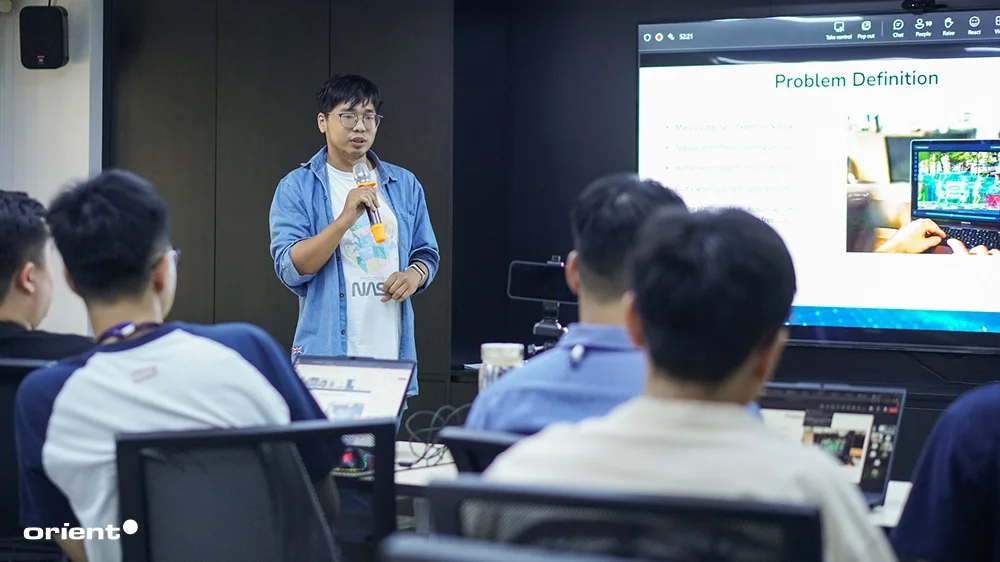
Why choose us? At Orient, we have experts who handle projects of all software development types. We provide our esteemed clients with a complete suite of outsourcing services, notably custom software development for various project types and scales. We are not merely a service provider; we grow as you grow. Our mission is to be your one-stop outsourcing service provider for all your IT needs, and we take pride in being skillful at it. Furthermore, we are confident in our efficient processes and our adaptability to cutting-edge technologies so that we can deliver only high-quality results to our clients.
You can entrust us with your software project or have us build a dedicated team of specialists work exclusively for you. If you want to expand your current team, we can also empower you with augmented tech talent. Whatever you require, we can make sure each and every software developer you add to your team being one of the best caliber candidates.
Why hesitate when you can meet up with our experts and actually discuss your requirements in further detail? Don’t wait any longer for fully functional software and contact us now.

